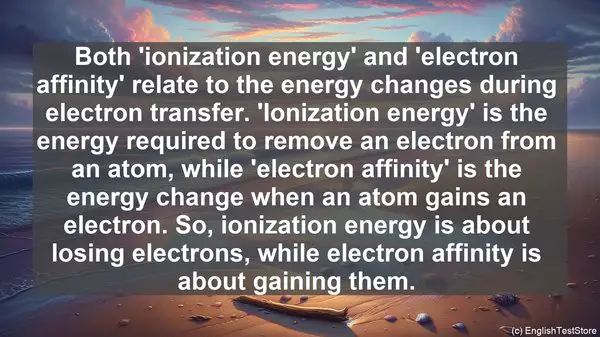Introduction
Quantum chemistry can be a complex subject, and sometimes, even the smallest words can cause confusion. In this lesson, we’ll explore the top 10 commonly confused words in quantum chemistry. By the end, you’ll have a clear understanding of these terms, ensuring your grasp on the subject is rock solid. So, let’s dive in!
1. Orbital vs. Orbit
One of the most common confusions in quantum chemistry is between ‘orbital’ and ‘orbit.’ While they sound similar, they have distinct meanings. An ‘orbital’ refers to the region around the nucleus where an electron is likely to be found, while an ‘orbit’ is the specific path an electron takes around the nucleus. So, think of it this way: an ‘orbital’ is like a cloud, and an ‘orbit’ is like a well-defined track.
2. Energy Level vs. Energy State
In quantum chemistry, ‘energy level’ and ‘energy state’ are often used interchangeably, but they have subtle differences. An ‘energy level’ refers to a specific energy value that an electron can have, while an ‘energy state’ refers to a combination of energy level, orbital, and spin. So, an energy state is more comprehensive, encompassing multiple factors.

3. Valence vs. Core Electrons
When discussing electron configurations, ‘valence’ and ‘core’ electrons come up frequently. ‘Valence’ electrons are in the outermost energy level of an atom and are involved in bonding, while ‘core’ electrons are in the inner energy levels and are not involved in bonding. So, valence electrons are the ones that matter the most in chemical reactions.
4. Ionization Energy vs. Electron Affinity
Both ‘ionization energy’ and ‘electron affinity’ relate to the energy changes during electron transfer. ‘Ionization energy’ is the energy required to remove an electron from an atom, while ‘electron affinity’ is the energy change when an atom gains an electron. So, ionization energy is about losing electrons, while electron affinity is about gaining them.
5. Isotope vs. Ion
While ‘isotope’ and ‘ion’ both involve changes in an atom, they are different concepts. An ‘isotope’ is a variant of an element with the same number of protons but a different number of neutrons. On the other hand, an ‘ion’ is an atom that has gained or lost electrons, resulting in a different charge. So, isotope focuses on the nucleus, while ion focuses on the electron cloud.
6. Ground State vs. Excited State
Atoms are usually in their ‘ground state,’ which is the lowest energy state. However, when they absorb energy, they enter an ‘excited state,’ where electrons are in higher energy levels. This excited state is often temporary, as the electrons eventually return to the ground state, releasing the absorbed energy as light.
7. Quantum Numbers vs. Electron Configuration
Both ‘quantum numbers’ and ‘electron configuration’ provide information about an electron’s location. Quantum numbers specify the energy level, orbital, and spin, while electron configuration shows the arrangement of electrons in an atom. So, quantum numbers are like coordinates, while electron configuration is like a map.
8. Pauli Exclusion Principle vs. Hund’s Rule
The ‘Pauli Exclusion Principle’ states that no two electrons in an atom can have the same set of quantum numbers. On the other hand, ‘Hund’s Rule’ states that electrons will occupy separate orbitals of the same energy level before pairing up. So, the Pauli Exclusion Principle focuses on individual electrons, while Hund’s Rule looks at the overall arrangement.
9. Paramagnetic vs. Diamagnetic
When it comes to magnetism, ‘paramagnetic’ and ‘diamagnetic’ substances behave differently. ‘Paramagnetic’ substances have unpaired electrons, which are attracted to a magnetic field, while ‘diamagnetic’ substances have all their electrons paired, resulting in no attraction. So, paramagnetic substances are magnetically active, while diamagnetic substances are not.
10. Hybridization vs. Molecular Orbital Theory
Both ‘hybridization’ and ‘molecular orbital theory’ explain bonding in molecules. ‘Hybridization’ focuses on the mixing of atomic orbitals to form hybrid orbitals, while ‘molecular orbital theory’ describes the formation of molecular orbitals from atomic orbitals. So, hybridization is about localized bonding, while molecular orbital theory is about delocalized bonding.

